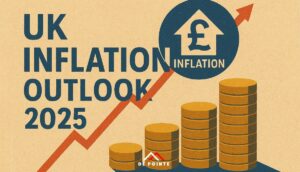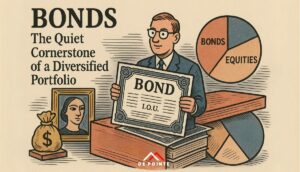Article

Art has long been celebrated for its aesthetic and emotional impact, but it also holds a unique position in the financial world. Collectors and investors often wonder: why does art rise in value? This question leads us to a fascinating exploration of market dynamics, cultural significance, and the intrinsic qualities of art that contribute to its escalating worth. In this post, we’ll delve into the key factors that drive the appreciation of art, shedding light on this intriguing intersection of creativity and economics.
1. Cultural and Historical Significance
One of the primary reasons art appreciates in value is its cultural and historical importance. Artworks that capture significant moments, movements, or historical figures often hold greater value due to their rarity and the story they tell. For instance, a painting from the Renaissance period or a work by a pivotal artist in a groundbreaking movement like Cubism or Impressionism is likely to command higher prices over time. Collectors and institutions are willing to pay a premium for pieces that encapsulate a unique piece of history or that represent a significant cultural milestone.
2. Artist Reputation and Legacy
The reputation and legacy of the artist play a crucial role in the value of their work. Several factors contribute to an artist’s reputation, including their schooling, exhibition history, and whether their work has been collected by prestigious museums and galleries. Some argue that the signature is the most valuable aspect of an artwork.
• Schooling: An artist’s educational background can significantly influence their reputation. Graduates from renowned art schools, such as the Royal Academy of Arts in London, the École des Beaux-Arts in Paris, or the School of the Art Institute of Chicago, often have a competitive edge in the art market. These institutions are known for their rigorous training and illustrious alumni, lending credibility and prestige to their graduates.
• Exhibition History: An artist’s exhibition history is a testament to their recognition and acceptance within the art community. Participation in high-profile exhibitions, biennales, and solo shows at respected galleries signals to collectors and investors that the artist is both active and relevant. Notable exhibitions can significantly boost an artist’s visibility and credibility.
• Museum and Gallery Collections: Being collected by prestigious museums and galleries is a strong indicator of an artist’s importance and value. Institutions such as the Museum of Modern Art in New York, the Tate Modern in London, and the Louvre in Paris are selective about their acquisitions, often choosing works with historical or cultural significance. When an artist’s work is included in such collections, it not only enhances their reputation but also increases the desirability and value of their art.
3. Market Dynamics and Trends
Economic trends do not impact the art market broadly. However, they do influence art investors’ motivations. When the economy is strong, there is often more disposable income for luxury investments, including art. Conversely, art can serve as a tangible asset that retains or even increases its value during economic downturns, offering a hedge against inflation. Additionally, trends within the art world, such as the popularity of certain styles, mediums, or themes, can impact the value of specific artworks. For instance, the rise of digital art and NFTs (non-fungible tokens) has created new market opportunities and value propositions.
4. Gallery Involvement
The role of galleries in an artist’s career is pivotal. A reputable gallery not only showcases an artist’s work but also actively promotes it, increasing demand and recognition. Galleries are instrumental in:
• Exhibitions: Securing exhibitions in prime locations and prestigious events, which help to elevate the artist’s profile and expose their work to a broader audience.
• Collections: Facilitating the acquisition of the artist’s work by esteemed collectors and institutions, further validating the artist’s significance and boosting the value of their work.
• Promotion: Actively marketing and promoting the artist through various channels, including art fairs, publications, and online platforms. This continuous promotion keeps the artist in the public eye and maintains demand for their work.
A strong gallery-artist relationship can lead to a steady increase in the artist’s market value, as the gallery’s efforts help to establish and sustain a high level of interest in the artist’s work.
Auction results seen by artists represented by one of our leading Art Market Partners.
5. Auctions
Auctions play a crucial role in the art market, particularly in crystallising the value of an artist’s work. When an artist reaches a point where their demand has been significantly raised by gallery representation, auctions can reflect this heightened interest and establish new price benchmarks. Key aspects include:
• Visibility: Auctions provide a public platform where the artist’s work is seen by a global audience of collectors, dealers, and investors. High-profile auction houses like Sotheby’s and Christie’s are particularly influential.
• Market Validation: Achieving high prices at auction serves as a public validation of the artist’s market value. The competitive bidding process can drive prices up, often exceeding pre-sale estimates and setting new records.
• Demand Reflection: The final auction price reflects the current demand for the artist’s work. A successful auction result can further enhance the artist’s reputation and increase the value of their future works.
6. Provenance and Authenticity
The provenance, or history of ownership, of an artwork significantly affects its value. Art with a well-documented provenance is generally more valuable as it provides a verifiable record of authenticity and historical significance. Provenance can include past exhibitions, previous ownership by notable collectors or institutions, and documented sales. Conversely, the risk of forgeries or disputes over authenticity can severely diminish an artwork’s value, underscoring the importance of credible provenance.
Understanding what causes art to rise in value involves a complex interplay of historical significance, market dynamics, artist reputation, gallery involvement, and auction results provenance. For collectors and investors, recognising these factors can provide valuable insights into the art market and guide informed decisions. At De Pointe Research, we continue to explore these dynamics, offering a deeper appreciation of the intricate and ever-evolving world of art economics. Whether you are an avid collector or a curious observer, the journey into art’s rising value is as enriching as the artworks themselves.
Want to Learn More About the Art Market?
For more insights into the art market and to understand how to navigate its complexities, contact De Pointe Research today. Our team of experts is here to provide you with the information you need to make informed art investment decisions. You can find out more about the art investment by submitting the form below.










